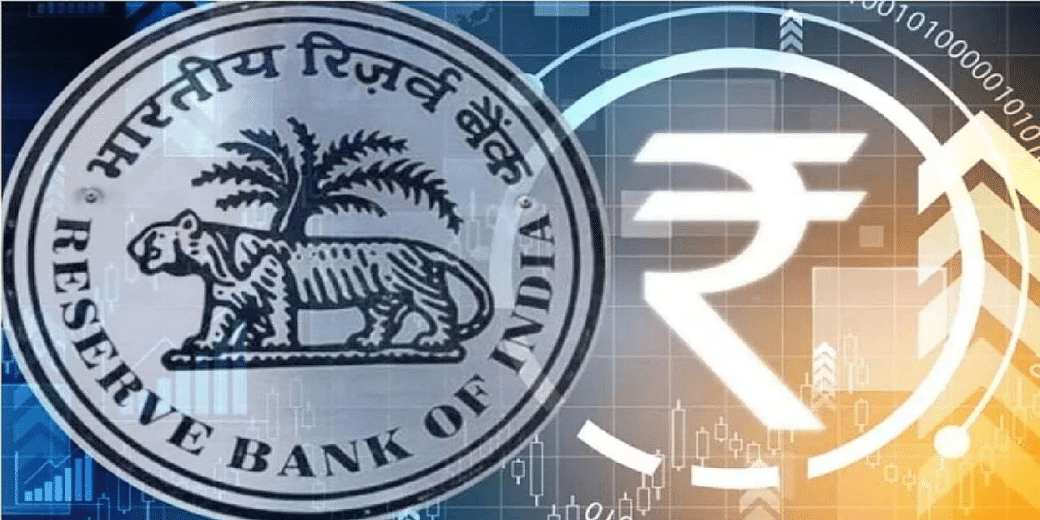Digital Rupee on the Horizon: How RBI's CBDC Pilot is Shaping India's Financial Future
While the potential benefits of CBDCs are compelling, the digital rupee is not without its challenges.

In a rapidly evolving financial landscape, the RBI took a significant step towards shaping India’s financial future by launching a pilot program for Central Bank Digital Currencies (CBDCs) last year. The pilot program encompasses two variants- CBDC-W (wholesale) and CBDC-R (retail).
The CBDCs have been in development for several decades around the globe. In what is believed to be the world’s first CBDC, the Bank of Finland, in 1993, introduced the Avant smart cards. As of last year, there were nearly 100 CBDCs in various stages of research and development worldwide and especially central banks started to take interest in CBDCs after the rising popularity of cryptocurrencies. China’s Digital Yuan and the United States’ digital dollar initiatives were also likely in response to the rise of cryptocurrencies, aiming to maintain control over monetary policy and regulatory oversight, which is a critical requirement for the orderly functioning of the world economy. With the Digital Rupee joining the Digital Yuan and Digital Dollar, the three major economies of the world have now committed to developing their own digital currencies, setting the future discourse.
The digital rupee takes the form of a digital token, serving as legal tender and mirroring the denominations of paper currency and coins currently in circulation. This digital incarnation preserves the crucial elements of physical cash – trust, safety, and settlement finality. One of the most promising aspects of CBDCs is their inherent inclusivity. Traditional banking often leaves behind the underbanked and those in remote areas due to physical branch limitations. The Digital Rupee can be accessed via smartphones, making participation in the digital economy accessible to anyone with a mobile device. This inclusivity empowers marginalized communities, facilitating savings, investments, and economic activities.
Additionally, CBDCs hold the potential to reduce the cost of financial transactions, particularly for remittances – a lifeline for many Indian families. By eliminating intermediaries and lowering transaction fees, CBDCs can make cross-border transactions more affordable and efficient, positively impacting the livelihoods of countless individuals.
The digital nature of CBDCs would also offer policymakers a valuable resource – granular payment flow data across the economy. This data can enhance macroeconomic data integrity and analytics, enabling policymakers to formulate more precise and targeted policies. It could be a significant step towards data-driven decision-making in monetary policy and economic planning.
The wholesale segment of the CBDC pilot program was launched on November 1, 2022. Its initial use case was the settlement of secondary market transactions in government securities. CBDC-W promises to enhance the efficiency of the inter-bank market by settling transactions on a real-time basis rather than the existing T+1 model. Furthermore, CBDC-W settles trades based on the gross amount of bonds for each transaction, as opposed to netting, which is the norm. This reduces the need for collateral to mitigate settlement risk, reducing transaction costs.
CBDC will bring efficiency gains both in retail and interbank transactions as it makes a part of the currency system versus the payment system. Intermediaries like banks will not be required to check the ‘double spending problem’ which would bring down the transaction costs. The adoption of CBDCs will also lead to a reduction in the cost of printing and distributing paper currency. It will also help in mitigating counterfeiting issues. This would lead to increased formalization of the Indian economy, enhance transparency, and improve tax compliance, thereby increasing government revenue.
It’s essential to clarify that CBDCs do not pose an existential threat to traditional banks. In normal times, economic agents may prefer to keep their funds in interest-bearing bank deposits rather than CBDCs, as CBDCs do not generate interest income. However, in times of economic instability, CBDCs could be seen as a safer substitute for bank deposits. They are fully guaranteed by the central bank and carry no risk of losing their face value. This flexibility can potentially expedite a bank run. Nevertheless, safeguards can be implemented, such as limits on CBDC holdings and transactions during such periods.
While the potential benefits of CBDCs are compelling, the digital rupee is not without its challenges. The digital space opens possibilities for cyberattacks and individual account hacking. Therefore, adequate safeguards and thorough backups are imperative at all stages of CBDC transactions. Trust in the currency’s security is paramount for widespread adoption.
The launch of the RBI’s CBDC pilot program marks a significant milestone in India’s financial future. The digital rupee has the potential to bring about financial inclusion, reduce costs, and enhance transparency. However, it also requires meticulous attention to security and privacy concerns. By addressing these challenges and fostering collaboration, India can realize the full potential of the digital rupee.
Author is Chief Executive Officer, TIW Capital. Views are personal.